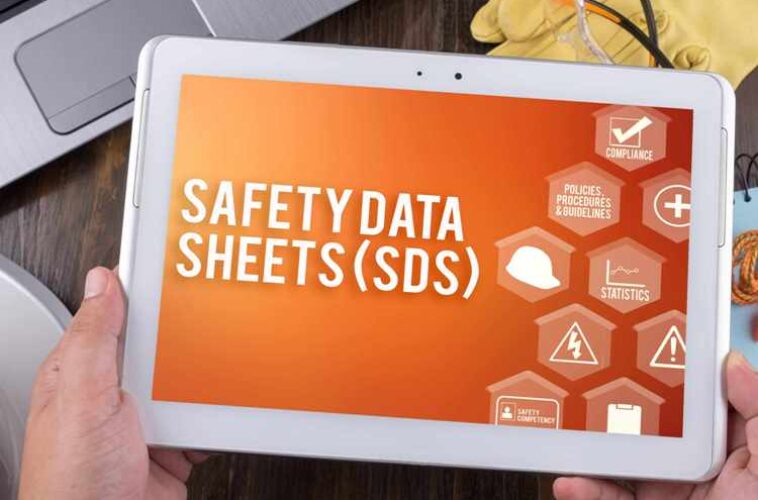Important Documents & Knowledge to Share with Your Chemical Manufacturer
- September 28, 2022
- Blog

So you’ve found your chemical manufacturing partner; what happens next?
There are a number of documents you’ll need to share and/or sign to get the ball rolling, which is sometimes referred to collectively as a technology transfer package. This exchange serves a number of functions, including:
- outlining the responsibilities of both/all parties
- establishing the quality and consistency standards for your product(s)
- protecting your IP
- shortening lead times by enabling optimal planning and raw materials orders
Let’s take a look at the major components of this process and how they each play a part in a smooth transition to outsourcing your chemical production.
The NDA
Either you or the manufacturer may provide the Non-Disclosure Agreement to be signed before the engagement period begins. Beyond the obvious detail–who the parties are, the duration of the agreement, etc.–key information to include to ensure a secure NDA includes:
- A broad definition of “confidential information”: In chemical manufacturing, information you don’t want revealed to competitors could be any number of things: formulas, mixtures, compounds, processes, or expertise. It may be found on blueprints, engineering reports, digital files and software, QA/QC reports, or flow-sheets. Use language that folds anything related to your operations–tangible or intangible–into the protection of the Agreement.
- Remedies: Outline the process for what happens in the event of a breach of the contract. Typically a brief paragraph conveying that a court with the requisite jurisdiction can grant relief if necessary.
- Reciprocity: While it may not be needed, incorporating language that also protects the private information of the contract manufacturer may help establish trust. Good fences make good neighbors.
- Third party coverage: If and when a third party gets involved in the production of your chemical product, having language in the NDA that specifies its duty to be bound by the same confidentiality as your contractor is prudent.
The SDS

The Safety Data Sheet is required by OSHA to protect the people who work with hazardous chemicals. It covers four main areas that must be presented across a 16-section format: the properties of the chemical; the health hazards posed; protective measures; and instructions for the safe handling, storage, and transportation of the chemical.
According to the relevant federal statute–The Hazard Communication Standard (HCS) (29 CFR 1910.1200(g))–“the chemical manufacturer, distributor, or importer” is responsible for providing this document. Depending on your contract manufacturer, they may assume responsibility for the creation of the SDS, they may leave it entirely to you, or they may offer to assist you with creating one.
If your product involves hazardous chemicals as raw materials, the suppliers will include their own SDS for each one, which your contract manufacturer must keep in a “readily accessible” place on-site.
Whatever your arrangement is, you have a vested interest in having an accurate, clear SDS for your product as a copy of it must ship with your hazardous product to your customer. The customer must then keep its own accessible copy of it on-site for any and all of its employees that will be working with that chemical.
For help crafting an SDS sheet, there are a number of companies in the U.S. that offer automated SDS production, including all necessary labeling.
The Formulation
The chemicals that comprise your formulation should be given to the manufacturer with their corresponding CAS Registry numbers. These unique identifiers help avoid confusion about generic or trade names that multiple chemicals may be known by. If you have approved vendors for particular chemicals, include their names and contact information, as well.
The formulation should include any and all mix/synthesis instructions. Specify whether it must be manufactured to any special standards such as Kosher, NSF, UL, or Halal.
Packaging Details
It’s common for large corporations that receive packaged final products from many manufacturers to convey a packaging guide in their transfer materials, some of which run many pages.
These will include guidelines on aspects such as labeling, pallet usage, banding or otherwise securing packages together, and general requirements for safe, professional packaging. Including color pictures inside this guide is not unheard of and can be helpful.
If your business only has one contract manufacturer and/or one product, a detailed guide may not be necessary. You may even elect to leave the packaging up to the contractor.
But at the very least, you’ll need to specify what size/type of container you require, whether tote, drum, pallet, pouch, or other, and at what fill weight. Any regulatory requirements should also be called out in your instructions.
Other Information
- Quality controls: Your manufacturer should have its own QA/QC protocols, but it’s advisable to share your own tests and standards for verifying quality, as well as the testing equipment that will be needed.
- Warehousing: Share your minimum and maximum reorder volume expectations and your typical order patterns if you intend to take advantage of storage with the manufacturer.
Seatex Has Been a Trusted Chemical Partner for Over 50 Years
As a provider of turnkey chemical manufacturing services for half a century, we pride ourselves on maintaining high-touch with our customers, beginning with the technology transfer.
We’ve found that collaboration and communication make for lasting relationships and superior products.










